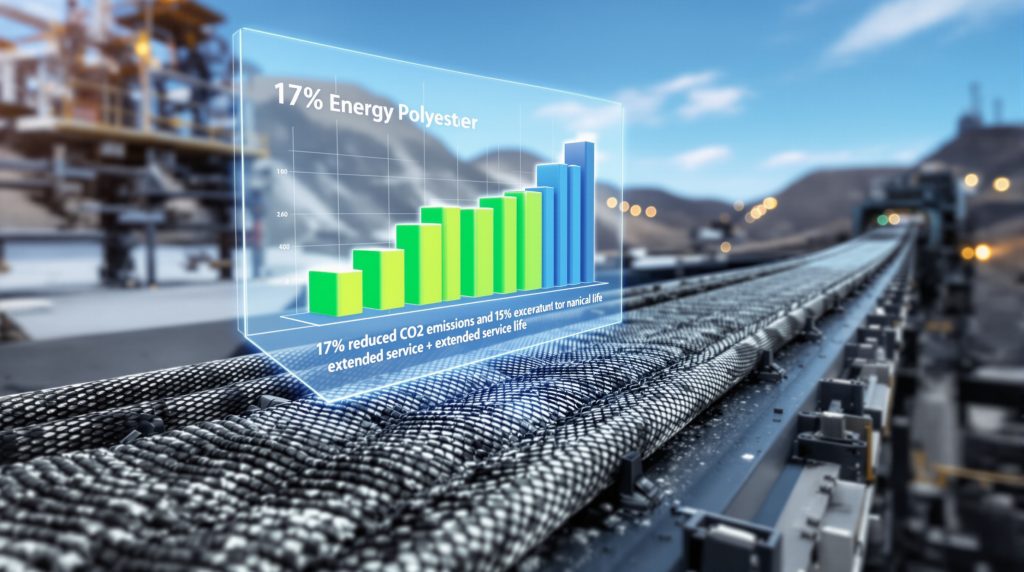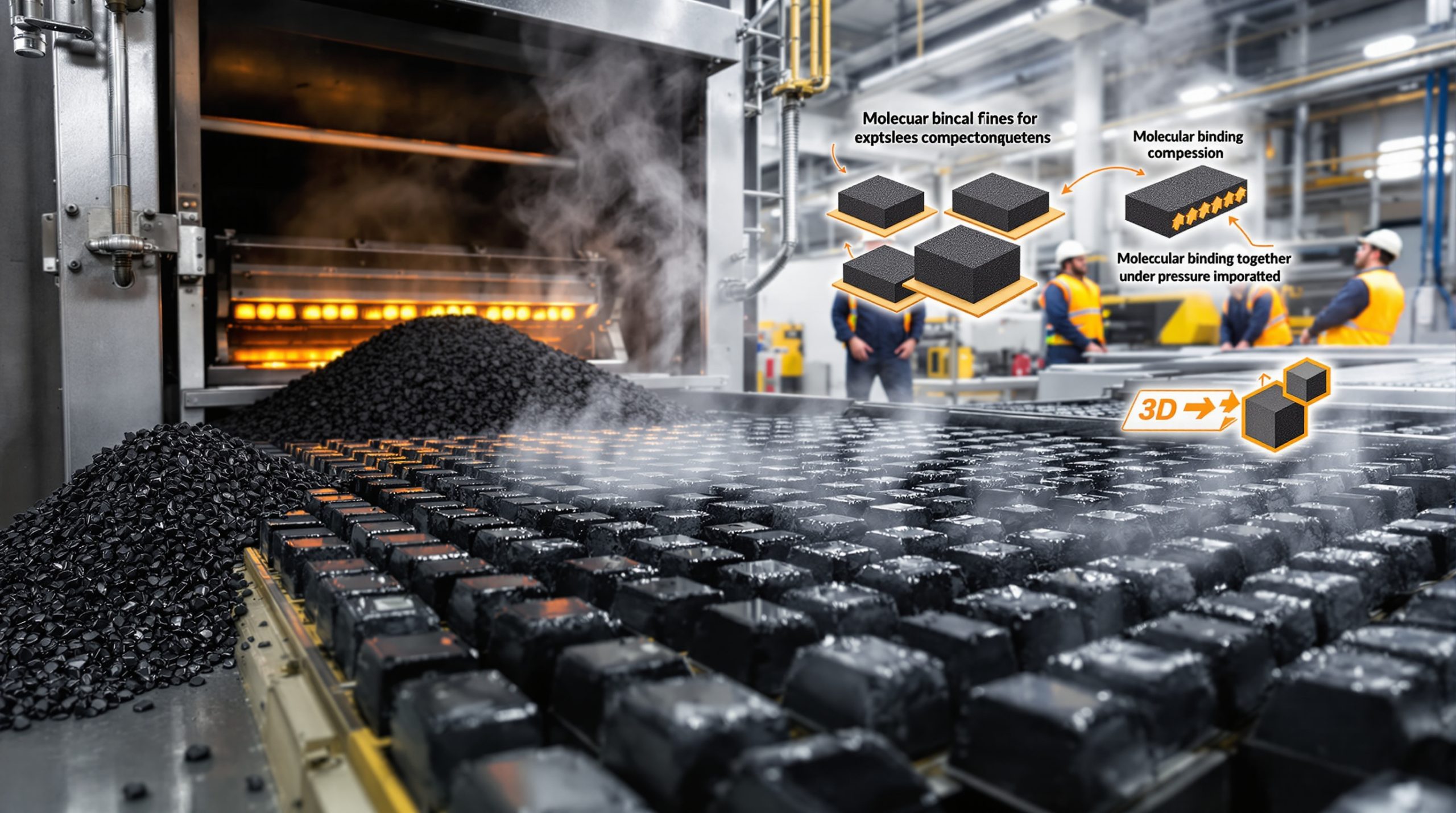What Makes High Energy Polyester (HEP) Conveyor Belts Different?
High Energy Polyester (HEP) conveyor belts represent a breakthrough in materials engineering for mining operations, addressing critical efficiency and sustainability challenges. Unlike traditional conveyor solutions, these innovative belts combine exceptional impact resistance with minimal elongation properties, creating a more durable and environmentally responsible option for material handling applications.
The specialized fabric construction of ContiTech's HEP belts provides superior tensile strength while maintaining flexibility across diverse operational conditions. This carefully engineered balance tackles longstanding industry issues related to belt durability, maintenance frequency, and overall operational efficiency.
The technical innovation behind HEP technology stems from its unique engineering approach that optimizes elastic properties without sacrificing impact resistance or operational stability. By reimagining the textile foundation of conveyor belts, manufacturers have created a solution that addresses multiple performance challenges simultaneously.
How Do HEP Conveyor Belts Reduce Environmental Impact?
Carbon Footprint Reduction
The environmental advantages of HEP conveyor belts manifest through several significant pathways:
- Up to 17% reduction in CO2 emissions throughout the production process chain compared to equivalent nylon belts
- Extended operational lifespan requiring fewer replacements over time
- Reduced maintenance interventions, minimizing associated transportation and resource consumption
- Lower energy consumption during operation due to optimized elastic properties
These environmental benefits align with increasing industry pressure to reduce carbon footprints across mining operations while maintaining or improving productivity metrics. As mining companies face growing scrutiny regarding their environmental impact, these technological improvements represent meaningful progress toward sustainable mining solutions.
Sustainability Comparison: HEP vs. Traditional Materials
| Performance Factor | Traditional Nylon Belts | HEP Conveyor Belts |
|---|---|---|
| CO2 Emissions | Baseline | Up to 17% reduction |
| Service Life | Standard | Extended lifespan |
| Maintenance Requirements | Regular adjustments needed | Reduced frequency |
| Raw Material Sustainability | Supply chain vulnerabilities | Improved sourcing stability |
The environmental advantage stems primarily from two factors: lower emissions during the production phase compared to nylon fiber manufacturing, and the extended service life that reduces the frequency of belt replacements, thereby decreasing overall environmental impact across the product lifecycle.
What Technical Innovations Drive HEP Belt Performance?
Advanced Material Engineering
The core technical innovations behind HEP conveyor belt technology include:
- Specialized polyester fabric construction that maintains optimal tension
- Engineered carcass design delivering superior load distribution
- Balanced elastic properties for impact absorption without excessive stretch
- Enhanced flexibility characteristics preventing damage under dynamic loading conditions
These technical features work together to create a conveyor solution that outperforms traditional options while addressing environmental concerns. The sophisticated engineering approach delivers a rare combination of characteristics that have historically required compromise.
Key Performance Characteristics
- Optimized Elastic Elongation: Maintains lower belt stretch while effectively absorbing impact energy
- Superior Flexibility: Reduces risk of belt damage under varying load conditions
- Operational Stability: Minimizes need for frequent tension adjustments
- Joint Integrity: Eliminates requirement for additional joints after load trials
These performance characteristics translate directly to operational improvements, including reduced maintenance requirements, extended service intervals, and more consistent material handling capabilities across diverse mining applications.
How Do HEP Belts Perform in Demanding Mining Applications?
Material Handling Capabilities
ContiTech's HEP conveyor belts demonstrate exceptional performance across diverse material handling scenarios:
- Abrasive Materials: Superior resistance to wear when handling sharp, angular materials
- Heavy Load Transport: Maintains structural integrity under sustained heavy loading
- Impact Resistance: Absorbs energy from material impact without permanent deformation
- Variable Speed Operation: Performs consistently across different operational speeds
These capabilities make HEP belts particularly well-suited for challenging mining environments where traditional belts often struggle to maintain performance over time. The ability to handle harsh, abrasive materials makes them especially valuable for operations dealing with iron ore and similar challenging materials.
Application Versatility
The versatility of HEP conveyor technology extends across multiple mining applications:
- Coal transportation systems
- Iron ore processing operations
- Aggregate handling facilities
- Mineral processing plants
- Port loading and unloading systems
This adaptability ensures that HEP technology can provide benefits across various mining operations without requiring specialized modifications or application-specific engineering. Since 2021, these belts have been successfully operating in Canada, Mexico, Germany, and the United States, demonstrating their global applicability.
What Are the Installation and Operational Benefits?
Implementation Advantages
Mining operations transitioning to HEP conveyor belt technology can expect several practical benefits:
- Direct Replacement: Compatible with existing conveyor systems without significant modifications
- Reduced Downtime: Fewer maintenance interventions means more operational uptime
- Extended Service Intervals: Less frequent tension adjustments required
- Predictable Performance: Consistent operation under varying load conditions
These implementation advantages reduce the barriers to adoption, allowing operations to upgrade their conveyor systems without extensive redesign or infrastructure changes. The belts can be fitted for both system upgrades and new installations, offering flexibility for diverse operational needs.
Operational Cost Considerations
The economic case for HEP conveyor belts includes several factors:
- Total Cost of Ownership: While initial investment may be comparable to premium conventional belts, the extended service life delivers long-term savings
- Maintenance Labor Reduction: Fewer adjustments and replacements reduce labor requirements
- Energy Efficiency: Optimized elastic properties can reduce drive power requirements
- Productivity Improvements: Reduced downtime translates to increased throughput potential
These economic benefits combine to create a compelling business case for implementing HEP conveyor technology, especially in operations handling abrasive materials where conventional belts require frequent replacement or adjustment.
What Technical Specifications Define HEP Conveyor Belts?
Standard Dimensional Options
ContiTech's HEP conveyor belts are available in a comprehensive range of specifications:
- Width Range: 550mm to 2400mm
- Belt Ratings: 160N/mm to 3150N/mm
- Configuration Options: Heat-resistant and oil-resistant variants available
- Compliance Standards: Meets DIN EN ISO, AS, IS and various international specifications
These standardized specifications ensure that HEP technology can be implemented across diverse conveyor systems without requiring custom engineering or specialized components. The wide range of available configurations accommodates most existing mining conveyor applications.
Customization Capabilities
Beyond standard specifications, HEP technology can be tailored to specific operational requirements:
- Custom width configurations for specialized applications
- Application-specific cover compounds for extreme conditions
- Specialized edge treatments for unique conveyor designs
- Engineered splice solutions for optimal joint performance
This customization potential ensures that even operations with unique material handling challenges can benefit from HEP technology without compromising performance or requiring extensive system modifications.
How Does HEP Technology Compare to Traditional Textile Belts?
Performance Comparison
Understanding the relative advantages of different belt technologies helps operations make informed decisions:
| Performance Attribute | Nylon-Polyamide (NN/PP) | Polyester-Polyamide (EP/PN) | HEP Technology |
|---|---|---|---|
| Impact Resistance | High | Moderate | High |
| Permanent Elongation | Higher (requires frequent adjustment) | Low | Very Low |
| Flexibility | Good | Moderate | Excellent |
| Maintenance Requirements | Higher | Moderate | Lower |
| Environmental Impact | Baseline | Improved | Best-in-class |
This comparison highlights how HEP technology combines the best characteristics of traditional belt types while minimizing their respective disadvantages. Rather than forcing operations to choose between impact resistance and minimal elongation, HEP technology delivers both simultaneously.
Application Suitability Matrix
Different belt technologies excel in specific operational contexts:
- Nylon-Polyamide: Historically preferred for very high impact applications despite elongation challenges
- Polyester-Polyamide: Well-suited for applications requiring minimal stretch but with limited impact requirements
- HEP Technology: Optimized for operations requiring both impact resistance and minimal elongation
This application suitability framework helps operations identify the most appropriate belt technology based on their specific material handling challenges and operational priorities. For operations handling abrasive materials like iron ore, HEP belts offer a particularly compelling combination of characteristics.
What Real-World Performance Data Supports HEP Technology Claims?
Implementation Timeline and Results
ContiTech's HEP conveyor belts have established a growing track record of performance:
- Successfully operating in multiple countries since 2021
- Demonstrated performance across diverse mining environments
- Consistent results across different material handling applications
- Validated environmental benefits through operational data
This operational history, while still developing, provides confidence in the technology's capabilities and long-term performance potential. The global adoption across multiple countries indicates broad applicability and reliability across diverse operational contexts.
Case Study: Iron Ore Application
In iron ore handling applications, HEP belts have demonstrated particular advantages:
- Reduced maintenance interventions compared to traditional belts
- Consistent performance under highly abrasive conditions
- Improved energy efficiency in high-throughput operations
- Extended service life even with challenging materials
These iron ore application benefits highlight the technology's suitability for some of the most challenging material handling scenarios in mining operations. The combination of abrasion resistance and minimal elongation creates significant operational advantages in these demanding contexts.
How Does HEP Technology Support Mining Decarbonization Goals?
Alignment with Industry Sustainability Initiatives
The mining industry faces increasing pressure to reduce environmental impact while maintaining productivity:
- HEP technology directly supports carbon reduction initiatives
- Contributes to scope 3 emissions reduction targets
- Aligns with ESG reporting requirements
- Supports sustainability commitments to stakeholders
As Ben Wood, ContiTech APAC director material conveyance, emphasized, sustainable product development represents a core commitment to lowering carbon emissions, with the product lifecycle offering multiple stages that present continued decarbonization opportunities for both manufacturers and their customers. These efforts complement broader mining decarbonisation benefits being realized across the industry.
Future Development Potential
ContiTech continues to advance HEP technology to further enhance sustainability benefits:
- Ongoing research into additional carbon reduction opportunities
- Exploration of recycled material incorporation
- Development of end-of-life recycling programs
- Integration with digital monitoring systems for optimized performance
These forward-looking developments indicate a long-term commitment to continuing environmental improvements beyond the initial 17% carbon reduction already achieved. By addressing the full lifecycle of conveyor belt technology, manufacturers can deliver ongoing sustainability improvements while supporting renewable energy transformations in mining operations.
FAQ: Common Questions About HEP Conveyor Belt Technology
What makes HEP belts different from standard polyester belts?
HEP technology features a specialized engineering approach that delivers superior impact resistance while maintaining minimal elongation properties, combining the best characteristics of different textile belt designs. This unique combination addresses the historical trade-off between impact resistance and elongation stability.
Are HEP belts compatible with existing conveyor systems?
Yes, HEP belts are designed as direct replacements for traditional textile belts, requiring no significant modifications to existing conveyor infrastructure. They can be implemented in both system upgrades and new installations with minimal adjustment requirements.
How do maintenance requirements compare to traditional belts?
HEP belts typically require fewer tension adjustments and have longer service intervals than traditional nylon-based belts, reducing maintenance labor requirements. This reduced maintenance frequency translates directly to improved operational uptime and lower overall maintenance costs.
What types of mining operations benefit most from HEP technology?
Operations handling abrasive materials like iron ore, where both impact resistance and minimal elongation are critical, see the most significant benefits from HEP technology. However, the technology's versatility makes it suitable for a wide range of material handling applications, especially those implementing modern mine planning practices.
How is the environmental impact reduction calculated?
The 17% CO2 emission reduction is calculated through lifecycle analysis comparing the production, operation, and replacement frequency of HEP belts versus traditional nylon alternatives. This comprehensive assessment accounts for both manufacturing emissions and operational lifespan differences.
Further Exploration
Readers interested in learning more about advanced conveyor belt technologies for mining applications can also explore related educational content from Australian Mining magazine, which offers industry perspectives on innovations in mining equipment and sustainability practices. For technical specifications, Continental's conveyor belt systems documentation provides comprehensive details on implementation requirements.
As the mining industry continues to prioritize both operational efficiency and environmental responsibility, technologies like ContiTech's HEP conveyor belts represent important advances in addressing these dual priorities. By combining superior performance characteristics with meaningful carbon footprint reductions, these innovations demonstrate how mining industry innovation can align with sustainability goals.
Want to Discover Mining Stocks Before Major Price Movements?
Discovery Alert's proprietary Discovery IQ model delivers real-time notifications on significant ASX mineral discoveries, turning complex data into actionable investment opportunities. Explore why historic discoveries generate substantial returns by visiting the dedicated discoveries page and begin your 30-day free trial today.




